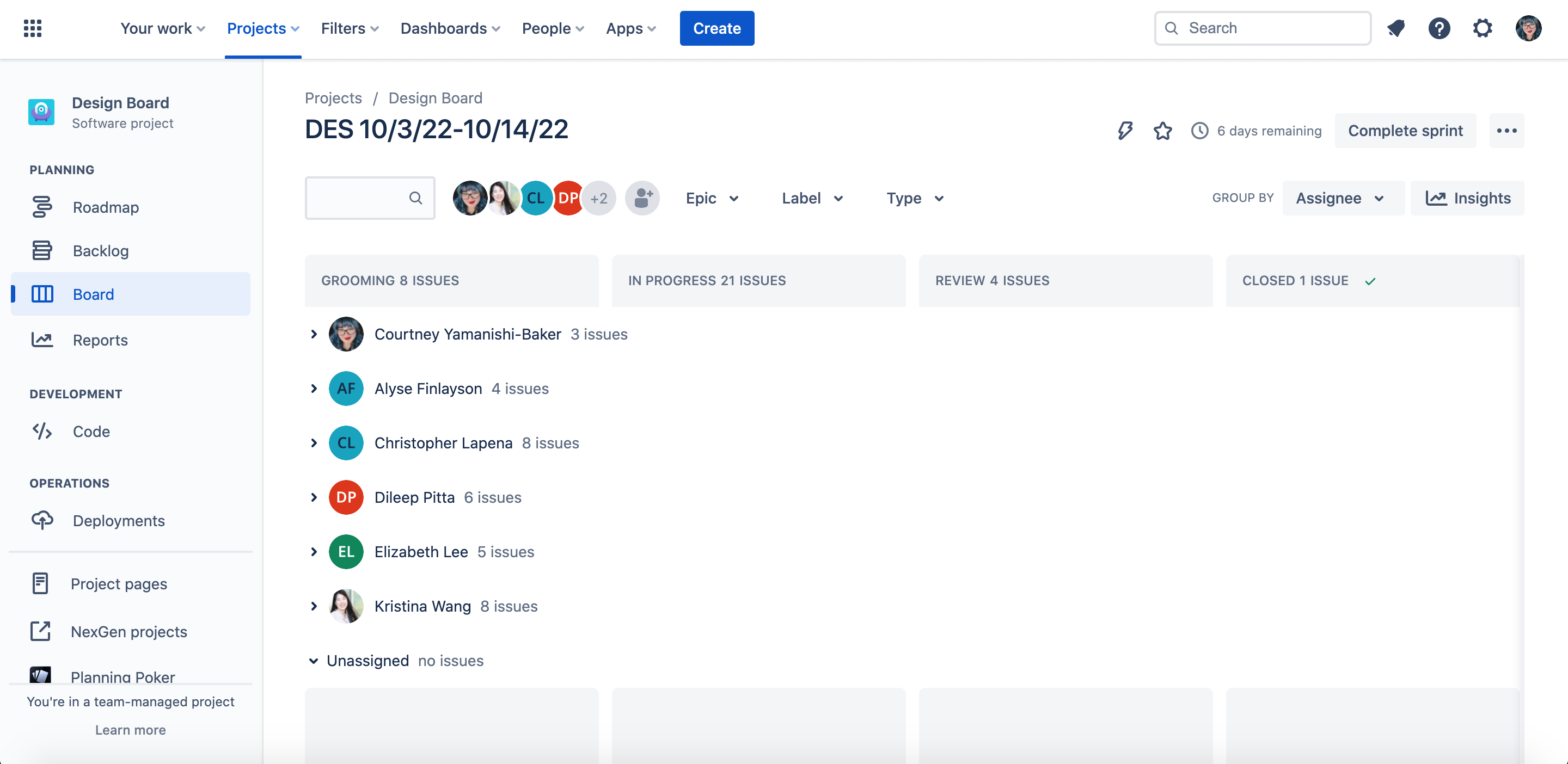Design Ops
Task Management - Collaboration - Standardization

Role
UX Design Manager
Deliverables
Stand Ups, Design Briefings, UI Reviews, 80/20 Project, Quarterly Book Club, Design Sprints, Backlog Organization
Problem
There was a lack of connection and collaboration both internally in the Design team and cross-functionally. There was also no tracking of design efforts or balancing of design bandwidth.
Result
A developed design culture and a collaborative team environment

Collaboration and Connection
In an effort to improve collaboration and connection both on my Design team and with our cross-functional partners, I implemented the following protocols:
Design Stand-Ups: Daily sync up time to understand what everyone is working on and promote a sense of connection, especially in a remote environment.
Design UI Reviews: Weekly time for the design team to ask each other for help on the designs they're working on. This has created a sense of collaboration and support despite everyone having their own areas of ownership.
Design Briefings: Bi-weekly sync ups with all of our cross-functional partners, including PM, Engineering, PMM, Marketing, Sales, and much more. It allows us to share what we are working on and get valuable feedback from people that have different perspectives in our organization.
80/20 Reviews: The 80/20 project allows our designers to have a creative outlet and work on things that might be more visionary for the company. We've done things like reimagining data visualizations, design systems, and information architecture.
Quarterly Book Club: The Quarterly Book Club allows for the design team to continue focusing on growth and development in a collaborative outlet. We choose a business or design oriented book, read it over the course of a quarter, and then explore our learnings together.
Design Sprints
One of the major issues that we had as a team was a lack of tracking when it came to design efforts. I solved this by implementing a design sprint and ticketing system using Jira following these 4 stages:
Grooming: Connecting with your PM and Engineering lead to understand the specs of the requirements. If the specs lack clarity, the ticket gets postponed until the requirements are more clear.
In Progress: After clarifying the specs, the ticket goes to "In Progress" to indicate designs are under way. During this stage, it is expected that the designer maintains good collaboration with their cross-functional partners to ensure a good result.
Review: Once the designs are ready to be looked at, the ticket goes in review. This is when the PM, Eng Lead, and Designer would meet up again to review the designs for any final feedback. If the designs need tweaks, it would go back into "In Progress".
Closed: Once the designs are ready to be given to developers for implementation, the ticket closes and there is a meeting scheduled to hand off the designs.

Design Backlog
In addition to creating a Kanban board structure for the design sprints, I also created a backlog structure to keep all of the tickets better organized.
Pending Approval: This is when we reach the end of a sprint, but we are still waiting for approval from either PM or Eng. It goes into this category as an interim status.
Blocked: This is when the designers can no longer work on this ticket because there is something that is blocking them from being able to do so, such as needing someone to give approval or additional details in order for them to proceed.
Needs Clarification: This is when the specs need additional detail prior to being assigned to a designer.
Incomplete Tickets: This is when a ticket is clearly missing details and the PM needs to fill out the rest of the ticket.
Postponed: This is when a ticket is no longer being prioritized for the time being.
Backlog: This is when a ticket is pending to be assigned to a designer and all of the specs are ready to go.

The Challenges and Solutions
It took a while for this process to be adopted by the PMs as they weren't used to writing tickets for design. It got better with continual reinforcement and explaining that it is required for better tracking of design efforts. Now it is a natural part of our processes as a company.